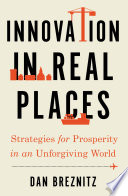

The book emphasizes the importance of local context in driving innovation. It argues that innovation is not a one-size-fits-all process but is deeply influenced by the specific characteristics of a place. Factors such as culture, history, and community values play a significant role in shaping how innovation unfolds. For instance, a tech startup in Silicon Valley may thrive due to access to venture capital and a network of like-minded entrepreneurs, while a similar startup in a rural area may face different challenges and opportunities. The authors encourage readers to understand their local environment and leverage its unique attributes to foster innovation. This idea challenges the notion that successful innovation can be replicated simply by copying models from successful regions, highlighting the need for a tailored approach that respects local nuances.
Continue readingAnother key idea is the power of collaboration and community engagement in driving innovation. The book illustrates how innovative solutions often emerge from partnerships between businesses, local governments, educational institutions, and community organizations. By working together, these stakeholders can pool resources, share knowledge, and create a conducive environment for innovation. The authors provide case studies of successful collaborative initiatives that have led to significant advancements in various sectors, such as healthcare, education, and technology. This idea underscores the importance of building networks and fostering relationships within the community to create a supportive ecosystem for innovation.
Continue readingThe book advocates for inclusive innovation, which involves ensuring that innovation processes are accessible to diverse groups of people. This includes marginalized communities, underrepresented minorities, and individuals from different socio-economic backgrounds. The authors argue that diverse perspectives can lead to more creative solutions and that innovation should not be limited to a select few. By promoting inclusive innovation, communities can harness the talents and insights of all their members, leading to more robust and sustainable outcomes. The book provides examples of initiatives that have successfully engaged diverse populations in the innovation process, demonstrating the benefits of inclusivity.
Continue readingSustainability is a recurring theme in the book, with the authors discussing how innovation can be a driver for sustainable development. They argue that businesses and communities must prioritize sustainability in their innovation efforts to address pressing global challenges such as climate change, resource depletion, and social inequality. The book highlights examples of organizations that have successfully integrated sustainability into their innovation strategies, resulting in both economic and environmental benefits. This idea challenges readers to think critically about the long-term impacts of their innovations and to consider how they can contribute to a more sustainable future.
Continue readingWhile technology is often seen as the core of innovation, the book posits that it should be viewed as an enabler rather than a standalone solution. The authors emphasize that technology must be aligned with the needs and realities of the local context to be effective. They caution against the temptation to adopt new technologies without understanding their implications or the specific challenges faced by a community. The book provides examples of how technology has been successfully integrated into local initiatives, enhancing their effectiveness and relevance. This idea encourages readers to approach technology with a critical mindset, ensuring that it serves the broader goals of innovation.
Continue readingThe authors stress the importance of learning from failure in the innovation process. They argue that failure should not be viewed as a setback but as an opportunity for growth and improvement. The book discusses how successful innovators often encounter setbacks and challenges, and how their ability to learn from these experiences contributes to their eventual success. By fostering a culture that embraces experimentation and tolerates failure, communities can create an environment where innovation can thrive. The authors provide practical strategies for cultivating this mindset, encouraging readers to reframe their perceptions of failure as a valuable part of the innovation journey.
Continue readingThe final key idea revolves around the role of policy and institutional support in fostering innovation. The authors argue that effective policies and supportive institutions are critical for creating an environment conducive to innovation. They discuss how government initiatives, funding programs, and regulatory frameworks can either facilitate or hinder innovation efforts. The book highlights examples of regions that have successfully implemented policies to support innovation, showcasing the positive impact of strategic governmental involvement. This idea encourages readers to advocate for policies that promote innovation and to engage with local institutions to drive meaningful change.
Continue reading